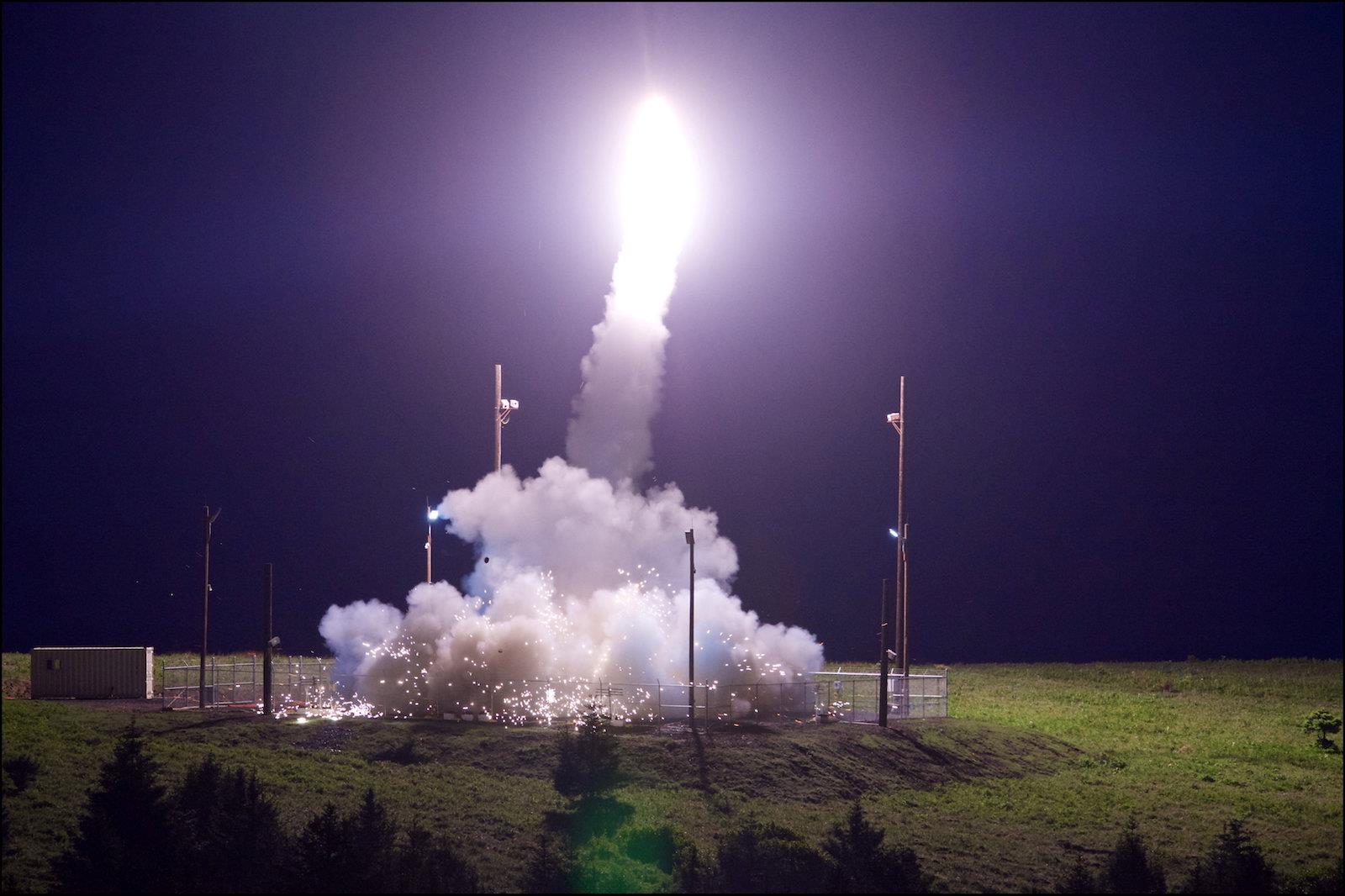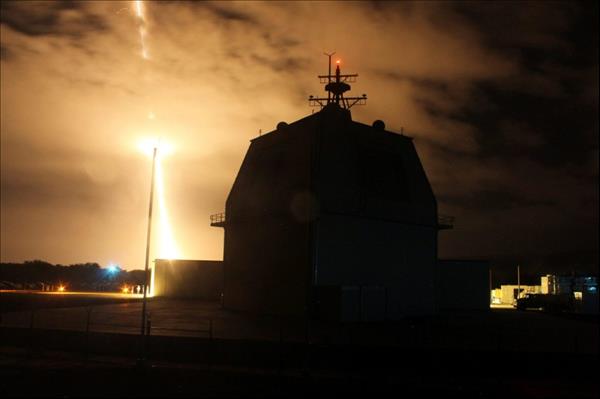
US Missile Shield Badly Exposed To Hypersonic Threats
Missile defense, more than mutually assured destruction, is arguably the bedrock of global strategic security. The credible threat of mutually assured destruction (MAD) backed by overlapping missile defenses has prevented the outbreak of nuclear war since 1945 and played a crucial role in efforts to slow and in spots reverse nuclear proliferation.
But the proliferation of new missile threats such as hypersonic weapons, increasingly sophisticated ballistic and cruise missiles, armed drones and long-range rockets coupled with advanced technologies such as stealth, electronic attack, maneuvering re-entry vehicles, decoys and precision targeting in China, Russia, Iran, and North Korea has spurred a new sense of urgency for the US to re-emphasize and improve its missile defenses.
The strategic logic of missile defense is based on deterrence by denial by making a missile attack unlikely to succeed, denying a potential aggressor confidence in attaining its objectives. It is the form of deterrence that forward-deployed missile defenses seek to achieve. At the operational level, missile defense operates on the principle of“hitting a bullet with a bullet”, knocking out incoming missiles with ground-based interceptors.
The US deploys a layered missile defense system to defend against such threats. The first layer of US missile defense is the Ground-based Midcourse Defense (GMD) system which protects all 50 states against a limited long-range ballistic missile attack.
It remains the US' sole system to counter intercontinental ballistic missiles (ICBMs), with its elements deployed across 15 time zones linked to 44 deployed Ground-Based Interceptor (GBI) missiles as of 2021. This system aims to address ICBM threats from China and Russia, the only two countries that can seriously threaten the US with a large-scale nuclear attack.
The second layer of US missile defenses consists of regional missile systems such as the Aegis, Patriot, and Terminal High Altitude Area Defense (THAAD) systems, which are geared towards intercepting medium-to-short range missile threats.

A THAAD interceptor is test-launched in Kodiak, Alaska, on July 11, 2017. Photo: Leah Garton / Missile Defense Agency / Handout
They provide an additional layer of defense-in-depth, providing multiple opportunities to defeat such threats with different capabilities, increase kill probabilities and prevent adversaries from overcoming missile defenses with a single technique.
These regional defenses are tailored against missile threats from Iran and North Korea, which fall out of the GMD's engagement capabilities, requiring these regional-level missile defense systems.
However, despite 70 years of research and an estimated US$350 billion in spending, no missile defense system to date has been proved to be effective against missile threats to the US homeland, according to a controversial February report by the American Physical Society, a not-for-profit membership organization of professionals in physics and related disciplines comprising nearly 50 divisions, sections and other units.
The report's findings have been contested by the US Missile Defense Agency, which said“the Missile Defense System (MDS) has demonstrated a measured capability to defend the United States, deployed forces and allies from a rogue nation's missile attack,” citing a January report by the Director, Operational Test and Evaluation (DOT&E), the Pentagon's top weapons testing official.
However, both trial and battlefield figures paint a more pessimistic picture. The GMD has a failing test record , with only a 55% success rate in highly-scripted tests, including six misses in its last six tries. Only half of the intercept tests conducted since 1999 have been successful, and the system has not been tested in realistic war-time conditions.
Even if the GMD is upgraded over time, it is not certain it can keep up with equally evolving countermeasures fielded by China and Russia, such as stealth coatings, decoys, maneuvering warheads and, not least, hypersonic weapons. If that is indeed the case, then the GMD cannot be relied on to defend the US even against a limited nuclear attack, with the absence of a defense system making no difference at all.
Regional missile defenses perform slightly better, although their record also leaves much to be desired. The Patriot system has a dismal record in the field, with the US Army initially claiming an 80% success rate in the 1991 Gulf War, which it later reduced to only 50% and then further winnowed to confidence in only one-quarter of intercept cases.
The Aegis and THAAD systems have similar reliability issues , with the Aegis having a mixed record of 34 successes out of 43 attempts in 2021 while the THAAD before 2006 had a dismal two out of 16 successful intercepts, which later improved to 16 out of 16 in 2019.
THAAD's success has led US allies like Saudi Arabia and South Korea to acquire the system. However, adversaries such as Iran and North Korea can deploy mid-course countermeasure decoys that have an identical infrared signature to real warheads in order to confuse missile defense sensors in addition to trying to overwhelm missile defense systems to expend costly interceptor missiles with volleys of relatively cheaper missiles.

The Aegis Ashore anti-missile system in a file photo. Photo: US Defense Department
US allies also seem increasingly reluctant to allow the deployment of regional missile defense systems on their territories.
In 2020, Japan canceled the deployment of the Aegis Ashore system , as the political costs with China then apparently outweighed any sense of reassurance that the system could give. Apart from relying solely on questionable missile defenses, Japan may opt to pre-emptively take out China and North Korea's long-range strike capabilities.
These issues all pose significant questions about the effectiveness of US missile defenses. Technological improvements such as networking isolated regional defense systems to maximize battlespace coverage, new engagement options such as launch-on-remote and engage-on-remote to allow launching interceptor missiles without initial targeting data and interceptor hand-over to other sensors to provide guidance data for terminal stages of engagement can improve the performance of missile-based defenses.
Other technological innovations in missile defense include directed-energy weapons such as lasers and microwave weapons, which both feature several advantages such as instantaneous hits, pinpoint targeting and scalable power depending on mission requirements.
Although they have a high initial cost, they are cost-efficient once established, with negligible costs per shot. The drawbacks, however, include massive power requirements, decreasing power with distance and sensitivity to atmospheric conditions.

Legal Disclaimer:
MENAFN provides the
information “as is” without warranty of any kind. We do not accept
any responsibility or liability for the accuracy, content, images,
videos, licenses, completeness, legality, or reliability of the information
contained in this article. If you have any complaints or copyright
issues related to this article, kindly contact the provider above.

















Comments
No comment